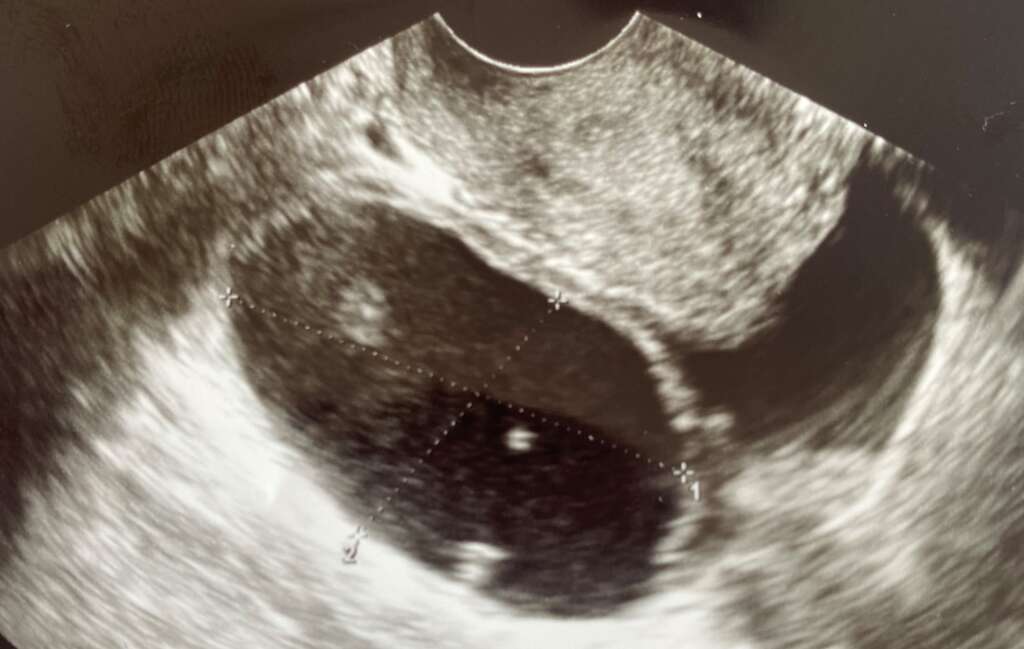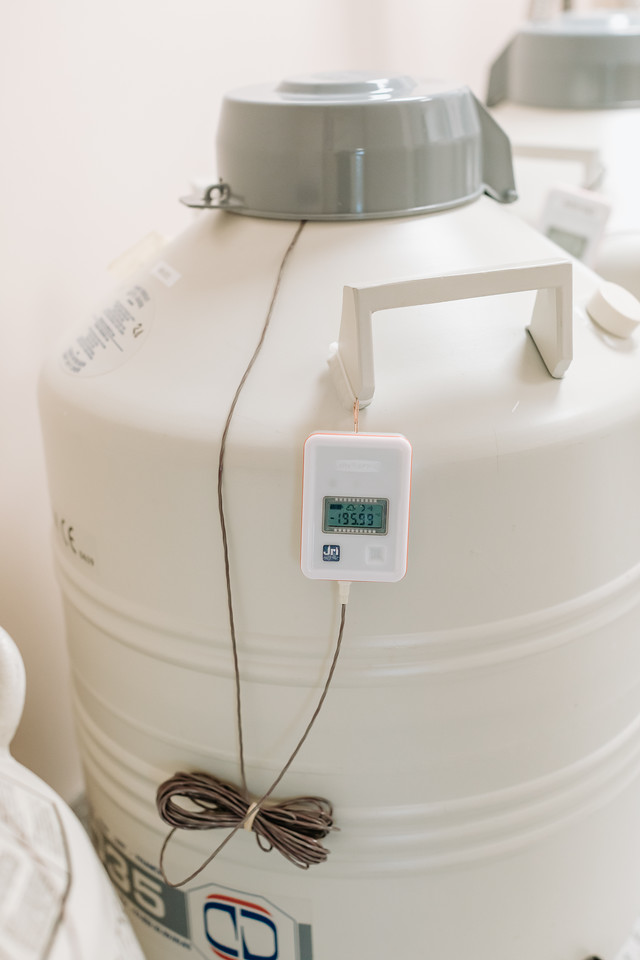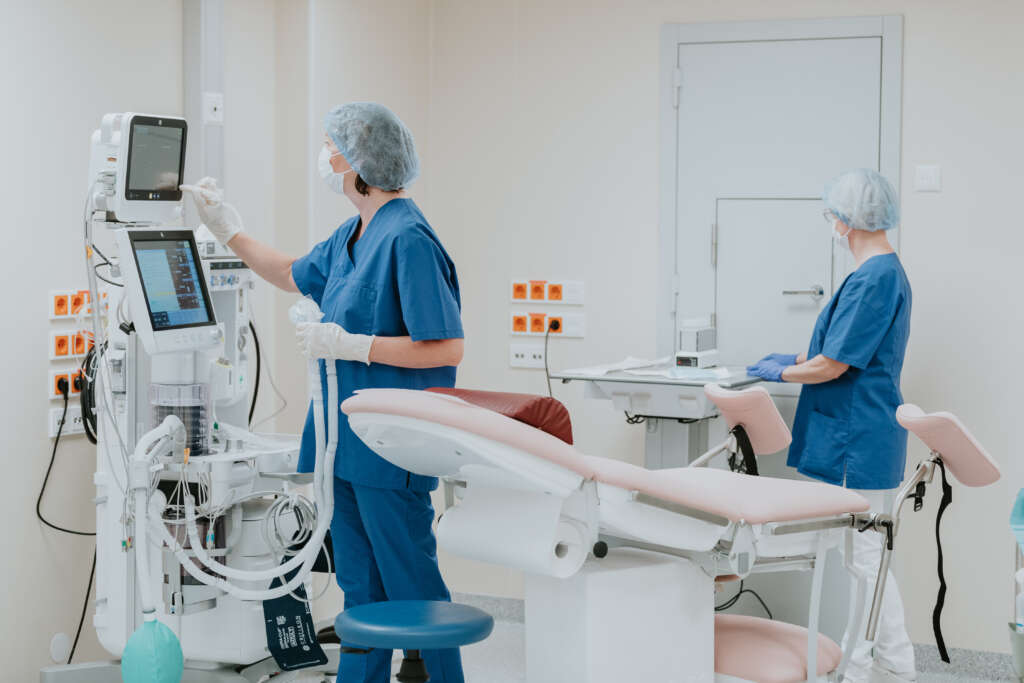Embryologist Samantha Wake gives a personal insight into her egg freezing cycle. The motivations, the process, and the implications.
For how long had I considered undergoing a cycle of my own?
I’ve always been mindful of the reality of fertility deteriorating with age. When you see people struggling with getting pregnant every day, it normalizes infertility. I know how common it is, so I began to take precautionary steps. Once I saw the set up at the clinic (Next Fertility Nordic), I started to really consider it because I trusted the medical procedures and know the lab specializes in egg freezing.

I tested my Anti-Müllerian hormone (AMH) a few years ago, and it was on the lower end of normal reserve for my age category (the level increased slightly after stopping contraception). Similarly, there is early menopause that runs in my family so that is at the back of my mind. I also wanted to complete the procedure before I turned 30.
For how long was the work-up process?
I had a general fertility assessment at a gynecologist’s consultation where the following analyses were ordered:
TSH, FT4, FT3, TPO Ak, Vitamin D, LH, FSH, Estrogen, Progesterone, Prolactin, DHEAS, Free Androgen Index, AMH.
Since my cycle was still irregular, I had a few ultrasounds that showed I had an ovarian cyst growing each month. Before starting stimulation medication there should be no cysts, so the cycle was put on hold for some months.
Before the cycle started, I also underwent infectious analyses (blood work) for: HIV, Hep B, Hep C and had a cervical swab for: Chlamydia, Gonorrhea and Trichomonas.
I submitted a general medical history and signed consents for treatment 1 month prior to the cycle starting.

How are the follicles stimulated?

On Day 1 of my cycle, I arranged an ultrasound scan to check my antral follicle count (AFC) which was 15. This helps to show a rough prognosis of the cycle.
The dose of the follicle stimulating hormone was decided by the Doctor based on my age, AMH and AFC. Prescriptions were given so I could dispense the Gonal F injection pen and Provera (oral tablets) from the pharmacy.
At the clinic the nurses showed me an example injection pen and gave instructions on how to use it. This video was helpful:

I started the medicines on the second day of the cycle: tablets in the morning and the injection in the evening.
It was a strange sensation injecting myself for the first time. It took a long time to ‘just do it’ but once I got used to the feeling of inserting the needle, it became easier.
An initial monitoring ultrasound appointment was set up after 4 days of injections to see how the follicles were looking. I continued with another 4 days and had another scan. I had the minimum days of stimulation (9 days) since the follicles were big in size. Only follicles bigger than 1.5mm are likely to contain a mature egg. Smaller follicles may contain an immature egg or no egg at all.

The trigger shot (Diphereline) needed to be done at a very precise time. I got my Nurse colleague/friend to inject it for me (it was 2 powders mixed with 1 vial of liquid which had to be mixed and aspirated with a syringe). I’m afraid not everyone has this luxury and would have to administer themselves. Since my retrieval was planned for 8:30am on a Monday morning, I did the trigger at 8:30pm on a Saturday evening.
What happened on the day of the procedure?
I arrived at the clinic without having eaten or drunken anything and filled a pre-operative questionnaire. I got changed into the gown etc and waited on the recovery bed. The nurse administered an IV into my arm (not the nicest thing but only lasts a moment). The anesthesiologist went through the history. I was brought into the operating room, where I identified myself to the lab and laid on the procedure chair and legs put in stirrups. The medication was inserted into the IV and since it was sedation, I went into a sleep-like state for about 20 minutes.

The Doctor wiped the vaginal area with saline and then inserted an ultrasound probe. The ultrasound is transmitted to the screen so the follicles can be visualized. There is a needle attached to the probe and goes into 1 ovary at a time. When the needle is inserted into each follicle, a pump is pressed which aspirates the follicular fluid into collection tubes. In total 24 follicles were drained. In the lab, the Embryologist searched through the fluid under the microscope and took out any oocyte-cumulus-complexes (COC) that were found – 16 in total. They were then rinsed and placed in IVF media in an CO2-gassed incubator.
In recovery, I simply laid/sat on the bed and had a drink and snack. Some people feel sleepy afterwards and they can nap for some time, but I did not take long to recover.
What happened to the eggs?
About an hour later, the oocytes were stripped from the surrounding cumulus cells. Once stripped, the eggs were visualized to assess the maturity of the eggs. Only the mature eggs were frozen (14 in this instance).
The freezing process involves placing eggs into a cryoprotectant media and then loading them 2 at a time onto a labelled freezing device (a thin straw). The straws with the eggs on are then submerged in liquid nitrogen and a cap placed on. They are stored in a tank filled with liquid nitrogen and kept at -196 degrees Celsius.


What are the financial implications?

At the moment, the Estonian health fund doesn’t cover social egg freezing (only for medical reasons). This means that the tests, medication and the procedure is paid out of pocket. Storing the eggs can seem quite expensive over time. However, it is an investment and could potentially save money further down the line if it avoids failed cycles and donor eggs. Hopefully in the future more companies will see the benefit of supporting young female employees and encouraging/ reimbursing some of the cost on a health plan.
What happens next?
I will keep the eggs in storage. If I find that I am unable to conceive naturally after 1 year of trying, I will be eligible to undergo an IVF cycle on the Estonian Insurance fund (before the age of 41) to thaw the frozen eggs and inject them via ICSI. Hopefully healthy blastocysts would develop, and I could have an embryo transfer.
If I find myself not needing to use the eggs, I will simply ask to discard them/consent for use in research/training at a later date.



